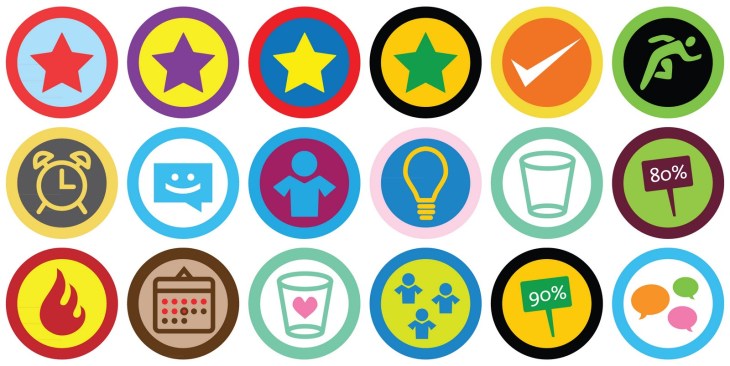Editor’s note: Guest contributor Joseph Puopolo is an entrepreneur and startup enthusiast, who blogs on a variety of topics including green initiatives, technology and marketing.
Over the last year, you may have noticed that a once-niche trend not only crept into the mainstream, but is starting to really make a big splash. Gamification has become one of the hottest buzz words in the industry and is probably in the process of taking over a website or user experience near you.
For the uninitiated, gamification, said simply, is the use of game design techniques and mechanics to solve problems and engage audiences. Over the last year, even large companies and enterprises are starting to get in on the game, with Gartner saying that all CIOs should have gamification on their radar, and M2 research predicting that the gamification market will reach 2.8 billion in direct spending by 2016.
Okay, so it’s on the rise, we get that, but let’s take a look at some of the players that are helping to take this trend to the next level. Three companies in particular are currently creating some buzz in the space: Badgeville, Bigdoor and Bunchball.
Badgeville started by making a big splash center stage at Disrupt in the fall of 2009. The company took home the Audience Choice Award at Disrupt, has since gone on a tear and is poised to have a great 2012. (Check out Rip’s original post on Badgeville’s prospects here.)
Badgeville Co-founder and CEO Kris Duggan pulls no punches when it comes to one of the most visible and early adopters of gamification, the check-in king: Foursquare. The CEO says that Foursquare was early in its attempts at gamification, but that its incentivization models remain fundamentally flawed.
Duggan points to the “Mayorship” system within Foursquare: “You have literally hundreds of people and only one mutually-exclusive point of recognition, the Mayor. What happens to the other hundreds of people? Not only are they not engaged, but you don’t take into consideration different types of users.” Duggan believes you need to engage not only the heavy user, but medium and light users as well. Rather than a one-size-fits-all methodology, you can appeal to each user type and incent them accordingly.
From a marketer’s perspective this is a huge hole in the way Foursquare approaches gamification for
brands. The ability for brands to own their engagement strategy is key for them to grow their model. A vanilla badge strategy will only allow them to go so far and without real control of the experience and rewards it won’t be a rich experience.
Keith Smith, CEO of Big Door, has seen large adoption of their gamification platform. And, in particular, the CEO recognizes a big opportunity selling to marketers: “Marketers today spend more money on acquiring users than working to retain those users and providing them with a reason to come back to a site”. By focusing on retention, marketers could get more value from their marketing dollars.
Big Door has been able to secure marquee customers including Dell. Dell took gamification beyond their website and used it for a live event to create multiple ways to engage attendees through Journeys, which were part of the conference tracks during the event. Each Journey was customized to a specific conference track. QR codes were located throughout the event and attendees were encouraged to scan codes and were rewarded with achievements for every scanned QR code and every journey they completed.
Big Door has even produced a very simple and easy to use widget that I implemented on my blog.
After the implementation I started seeing increased interaction on my site. For those looking to try out gamification out on their site, it is a great bet.
Molly Kittle, VP of Digital Strategy for Bunchball, notes that until recently, one of the biggest challenges for gamifiers has been in educating potential clients about the difference between gamification and social games. Molly sees a shift from education to adoption of gamification strategy in the future.
“I agree that some gamification does come off badly, and slapping some badges on a site isn’t professional or powerful, and we don’t want our customers to do that” she says. The quick-fix isn’t sustainable for most brands. Molly thinks there will be a huge change of perception across industries, catalyzed by a growing number of enterprises embracing gamification to solve real business challenges. Hey, there’s even gamify.com, with one of the best domain acquisitions for the market.
Travel companies, too, are getting in on gamification, with Trippy, Gogobot, and more offering gaming elements to their user experience. But, again, for startups and companies to be successful in this approach, gamification has to go beyond badges.
There are some common threads to the trends that Badgeville, Bigdoor and Bunchball see in the
gamification space:
- The space has quickly evolved from place where they are educating the customer about gamification to earlier customer understanding in their offering
- Frictionless installs are a necessity. They all recognize that if it is difficult to implement, then clients will not want to implement it.
- A world beyond badges: Badges will increasingly become less and less important, and the rise of true virtual currencies will become more prominent to offer users more than vanity accomplishments in the form of badges.
So what does the future hold for Gamification?
It is clear that it is unveiling a far larger market opportunity — the concept of what Duggan calls “behavior lifecycle management.” Some of the elements of gamification will further permeate into other applications. In the interest of driving increased user interaction, expect to see some form of game dynamics coming to a business application near you. Over this past year, gamification has shed its acne and awkward voice to come of age.
Excerpt image from MrDaley.com
